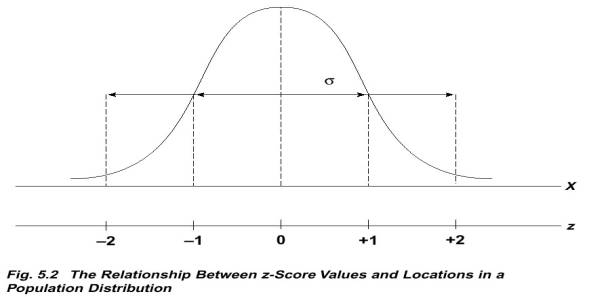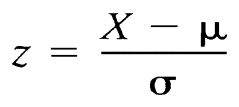
Psychology 230
Z-Scores
I. z-scores and location in a distribution
A. What is a z-score?

- standardize a distribution
uses mean and st. dev. to produce a number
- sign (+ or -) indicates above or below mean
- number gives distance from mean in st. dev. units

B. Formula

C. Deriving
a raw score from a z-score
X =
m
+ zs
D.
Characteristics of the z-score distribution
- shape will be same as the distribution of raw scores
- mean will always equal 0
- st. dev. will always equal 1
II. Using z-scores for making a
comparison
A. Standardized Distribution
- transposed scores
- make dissimilar comparable
- "standard score"

B. Why are z-scores important?
- probability (ch. 6)
- evaluating treatment effects (ch. 8)
- measuring relationships
III. Other Standardized scores based on
z-scores
A. Transformed Distributions

B. Steps for
Transforms
- raw score to
z-score (need old
m
and
s )
- z-score to new X score in new distribution with pre-determined mean and standard deviation (need new m and s )
The original distribution with µ = 57 and σ = 14 was standardized to produce a new distribution with µ = 50 and σ = 10. Note that each individual is identified by an original score, a z-score, and a new, standardized score. For example, Joe has an original score of 43, a z-score of –1.00, and a standardized score of 40.
